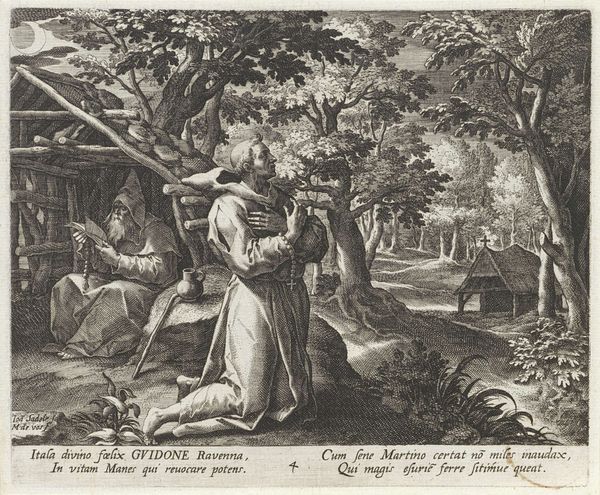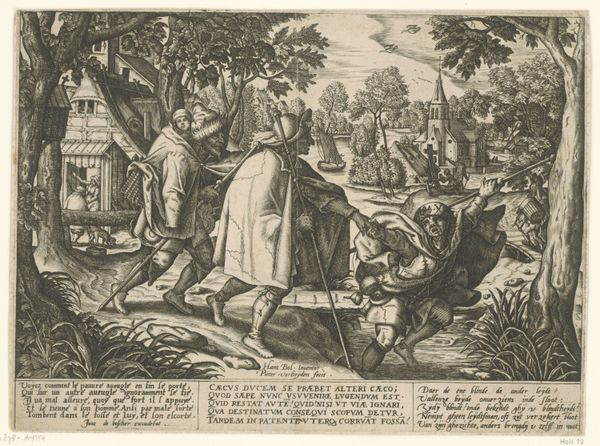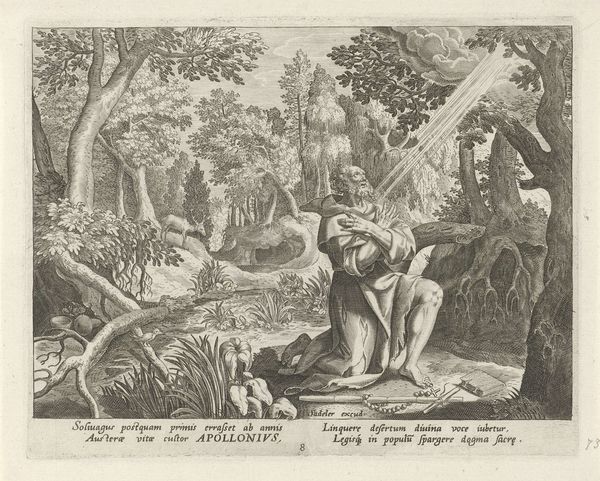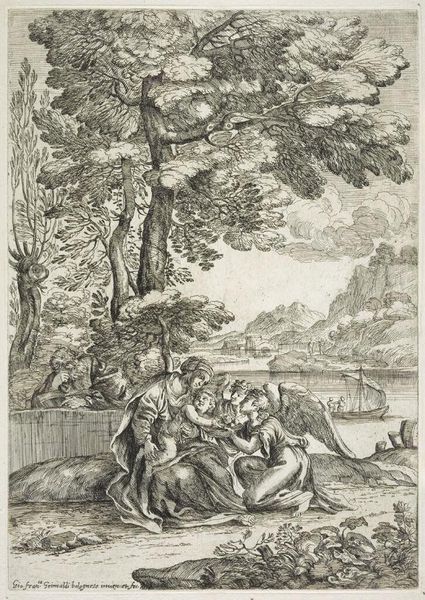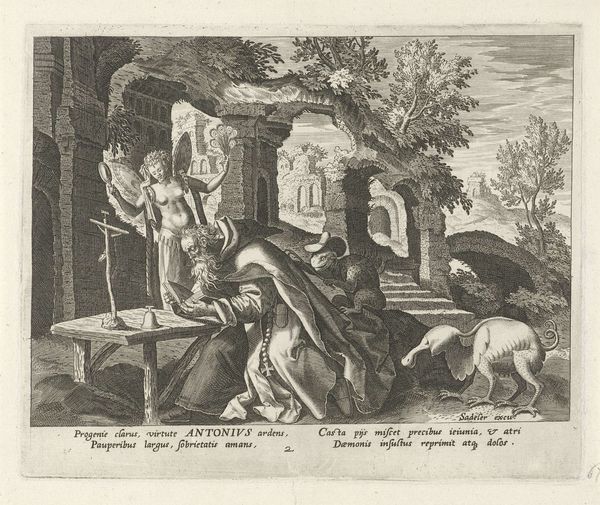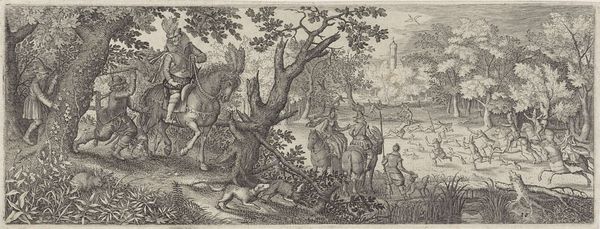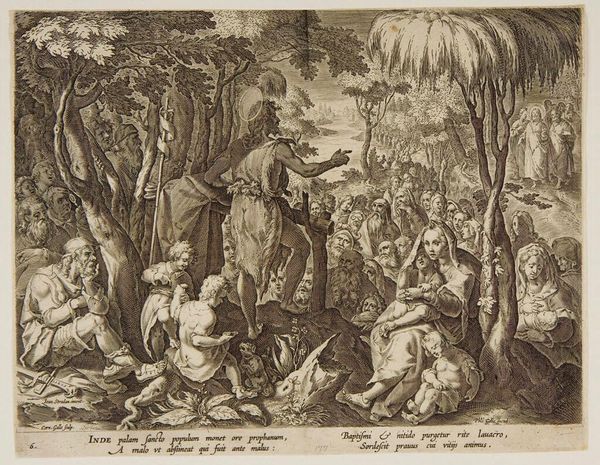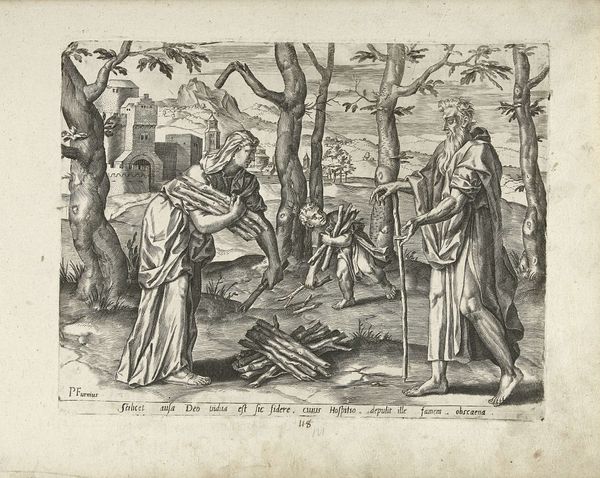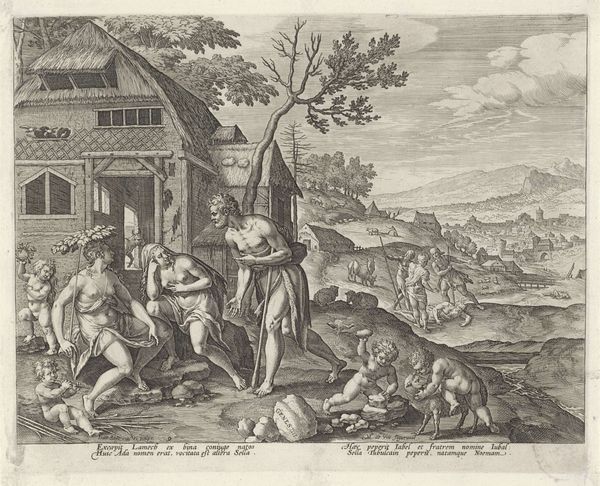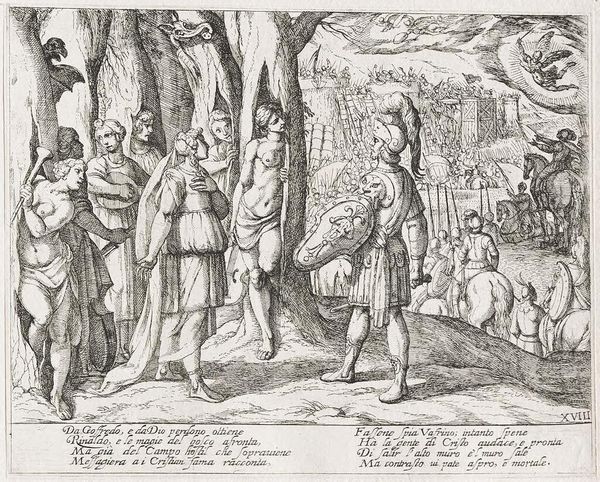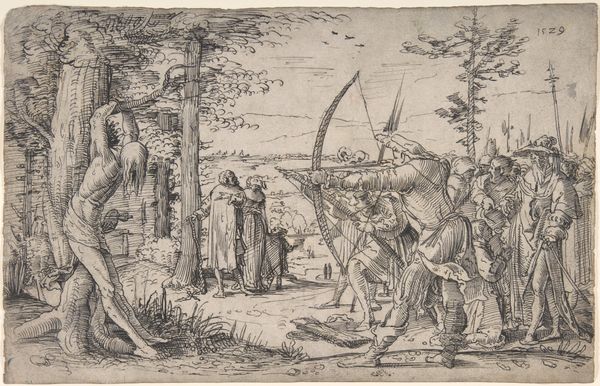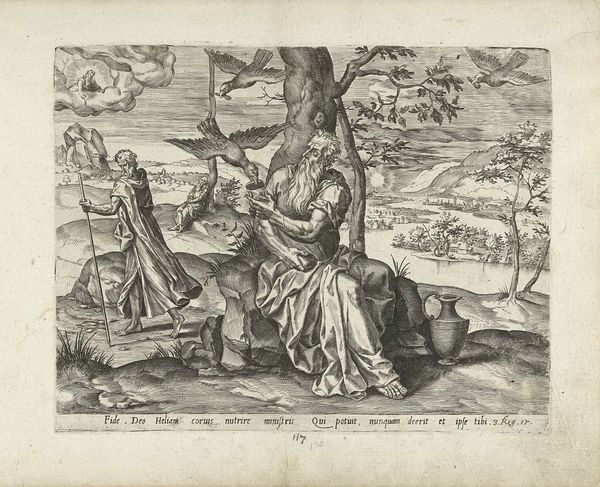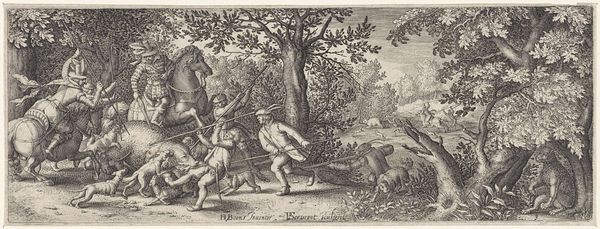
drawing, ink, engraving
#
drawing
#
light pencil work
#
ink drawing
#
narrative-art
#
pen drawing
#
mechanical pen drawing
#
pen illustration
#
pen sketch
#
pencil sketch
#
landscape
#
figuration
#
ink
#
pen-ink sketch
#
pen work
#
genre-painting
#
northern-renaissance
#
engraving
#
pencil art
Dimensions: width 223 mm, height 77 mm
Copyright: Rijks Museum: Open Domain
This is Julius Goltzius's engraving, "The Return of the Prodigal Son," made in the late 16th century. Reflecting the religious and social values of the time, the artwork brings to life the well-known parable from the Bible. Goltzius places the emotional climax of the story at center stage. The son’s return is a moment laden with shame, reconciliation, and unconditional love. Stripped bare, the son kneels, his body language speaking of repentance. It suggests an appeal for forgiveness and a longing for acceptance. What does it mean to return, especially when one has squandered their inheritance and dignity? The embrace that follows isn't just a gesture of familial love, but it is also a powerful symbol of divine grace. The father’s willingness to forgive flies in the face of societal expectations. It offers a narrative that values redemption over retribution. How does this image challenge the rigid social structures of the time? Consider the dynamics of class and morality, the potential for change, and the possibility of societal redemption.
Comments
No comments
Be the first to comment and join the conversation on the ultimate creative platform.
